Dixieland
 From Nwe
From Nwe
Dixieland music is an early style of jazz which developed in New Orleans at the start of the twentieth century, and spread to Chicago and New York City in the 1910s. Dixieland jazz combined brass band marches, French quadrilles, ragtime, and blues with polyphonic improvisation by trumpet (or cornet), trombone, and clarinet over a "rhythm section" of piano, guitar, banjo, drums, and double bass or tuba. The classic Dixieland sound is created by one instrument playing a melody while the other lead instruments improvise around it, creating a chaotic yet cohesive sound. The music's heyday was in the late 1910s and 1920s, experiencing a revival in the late 1940-50s.
Many musicians prefer the term "traditional jazz" to Dixieland, considering the latter to denigrate the music as unsophisticated and also feeling that the term has racial overtones. As an American stylism, Dixieland music incorporated the cultural aspects of New Orleans jazz music of the early twentieth century. It combined several musical forms to inculcate a new form of jazz which leaped cultural boundaries toward a harmony and cooperation beyond the divisions of nationality, religion, race and ethnicity.
History
Origins
The music of American-Creole composer Louis Moreau Gottschalk (1829-1869) included some of the earliest examples of the type of syncopation that would eventually become the hallmark of ragtime and Dixieland. As Gottschalk's biographer, Frederick Starr, points out, these rhythmic elements "anticipate ragtime and jazz by a half century."
Ragtime composers such as James Reese Europe and Scott Joplin were influenced greatly by Gottschalk's music. Europe's Clef Club Orchestra and Hell Fighters Band, as well as Will Marion Cook's Southern Syncopated Orchestra, were ensembles that made important contributions in the evolution of ragtime and Dixieland.
The early Dixieland style combined brass band marches, French quadrille dance music, ragtime, and blues with collective polyphonic improvisation in which musicians play several different complimentary melodies at the same time. While the instrumentation and size of bands could be very flexible, the "standard" band consists of a "front line" of trumpet (or cornet), trombone, and clarinet, with a "rhythm section" of at least two of the following instruments: guitar or banjo, string bass or tuba, piano, and drums.
Heyday
In the post WWI period, many jazz musicians moved from New Orleans to Chicago and created the style of Dixieland that flourished during the 1920s. Among them were: King Oliver, Louis Armstrong, Kid Ory, Sidney Bechet, and Jelly Roll Morton. As Dixieland evolved and moved to St. Louis, Detroit, and Chicago, it changed and took on different musical characteristics.
Cornetist, composer, and pianist Bix Beiderbecke was a key figure in making instrumental soloing a fixture of Dixieland jazz. Armstrong and others expanded on Beiderbecke's idea making solo improvisation a common practice of the genre. Also, Dixieland evolved into a more driving rhythmic style. Many Dixieland groups consciously imitated the recordings and bands of decades earlier. Other musicians continued to create innovative performances and new tunes.
Although the music had been played continuously since the early part of the twentieth century, the term Dixieland became widely used after the advent of the first million-selling hit records of the Original Dixieland Jass Band in 1917. Louis Armstrong's All-Stars was the band most popularly identified with Dixieland, although Armstrong's own influence runs through all of jazz.
Famous Dixieland hits of this era included "Basin Street Blues," "Bill Bailey, Won't You Please Come Home," "Alexander's Ragtime Band," "Potato Head Blues," and "The Sheik of Araby." Dixieland combos can also be heard as backing bands on records of other genres, from blues greats Ma Rainey and Bessie Smith to early country music such as that of Jimmie Rodgers.
Later trends
The swing era of the 1930s led to the end of many Dixieland musicians' careers. Only a few musicians were able to maintain popularity, and most retired. With the advent of bebop in the 1940s, the earlier group-improvisation style fell further out of favor with the majority of younger black players, while some older players of both races continued on in the older style. However, many beboppers particularly revered Louis Armstrong, and "quoted" fragments of his recorded music in their own improvisations.
There was a revival of Dixieland in the late 1940s and 1950s, which brought many semiretired musicians a measure of fame late in their lives as well as bringing retired musicians back onto the jazz circuit after years of not playing (e.g. Kid Ory). In the 1950s a style called "Progressive Dixieland" sought to blend traditional Dixieland melody with bebop-style rhythm. Steve Lacy played with several such bands early in his career. This style is sometimes called "Dixie-bop."
Some fans of post-bebop jazz consider Dixieland no longer to be a vital part of jazz, while some adherents consider music in the traditional style—when well and creatively played—every bit as modern as any other jazz style.
Terminology
While the term Dixieland is still in wide use, the term's appropriateness is a hotly debated topic in some circles. For some, Dixieland is still the preferred label, especially bands on the USA's West coast and those influenced by the 1940s revival bands. However, others, especially New Orleans musicians and those influenced by the African-American bands of the 1920s, prefer terms like "classic Jazz" or "traditional jazz." Some of the latter consider Dixieland a derogatory term implying superficial hokum played without passion or deep understanding of the music. Furthermore, according to jazz writer Gary Giddins, the term Dixieland was widely understood in the early twentieth century as a code for "black music."
From the late 1930s on, black and mixed-race bands playing in a more traditional group-improvising style were referred to in the jazz press as playing "small-band Swing," while white and mixed-race bands such as those of Eddie Condon and Muggsy Spanier were tagged with the Dixieland label. Some black musicians today, young as well as old, play New Orleans jazz, traditional jazz, or small band swing that could also be called Dixieland, although black musicians often reject the term.
A number of early black bands used the term Creole (as with King Oliver's Creole Jazz Band), including some that were not actually ethnic Creoles. Some writers believe it makes sense to say only white musicians play "Dixieland." For them, "Dixieland" is essentially a white subset of "traditional jazz."
Modern Dixieland
Today there are three main active streams of Dixieland or tradition jazz:
Chicago style
"Chicago style" is often applied to the sound of Chicagoans such as Eddie Condon, Muggsy Spanier, and Bud Freeman. The rhythm sections of these bands substitute the string bass for the tuba and the guitar for the banjo. Musically, the Chicagoans play in more of a swing-style 4-to-the-bar manner. The New Orleans-style preference for an ensemble sound is deemphasized in favor of solos. Chicago-style Dixieland also differs from its southern origin by being faster paced, resembling the hustle-bustle of city life. Chicago-style bands play a wide variety of tunes, including most of those of the more traditional bands plus many of the Great American Songbook selections from the 1930s by George Gershwin, Jerome Kern, Cole Porter, and Irving Berlin. Non-Chicagoans such as Pee Wee Russell and Bobby Hackett are often thought of as playing in this style. This modernized style came to be called Nicksieland, after Nick's Greenwich Village night club, where it was popular, though the term was not limited to that club.
West Coast revival
The "West Coast revival" is a movement begun in the late 1930s by the Lu Watters Yerba Buena Jazz Band of San Francisco and extended by trombonist Turk Murphy. It started out as a backlash against the Chicago style, which was felt to be too close to swing. The repertoire of these bands is based on the music of Joe "King" Oliver, Jelly Roll Morton, Louis Armstrong, and W.C. Handy. Bands playing in the West Coast style use banjo and tuba in the rhythm sections, which play in a 2-to-the-bar rhythmic style. Watters emphasized reproducing the recorded sound of King Oliver's band with Armstrong on second cornet. Since the Oliver recordings had no drums, Watters omitted the drums as well, even though Oliver had drums when he played live.
New Orleans Traditional
The "New Orleans Traditional" revival movement began with the rediscovery of Bunk Johnson in 1942 and was extended by the founding of Preservation Hall in the French Quarter during the 1960s. Bands playing in this style use string bass and banjo in the rhythm section playing 4-to-the-bar and feature popular tunes and gospel hymns that were played in New Orleans since the early twentieth century, such as "Ice Cream," "You Tell Me Your Dream," "Just a Closer Walk With Thee," and some tunes from the New Orleans brass band literature. The New Orleans "revival" of the 1960s added a greater number of solos, in a style influenced by mid-century New York Dixieland combos, as this was less of a strain on some musicians of advanced years than the older New Orleans style with much more ensemble playing.
There are also active traditionalist scenes around the world, especially in Britain and Australia.
Famous traditional Dixieland tunes include: "When the Saints Go Marching In," "Muskrat Ramble," "Struttin' With Some Barbecue," "Tiger Rag," "Dippermouth Blues," "Milneburg Joys," "Basin Street Blues," "Tin Roof Blues," "At the Jazz Band Ball," "Panama," "I Found a New Baby," "Royal Garden Blues" and many others. All of these tunes were widely played by jazz bands of both races of the pre-WWII era, especially Louis Armstrong.
Partial List of Dixieland musicians
Some of the artists historically identified with Dixieland are mentioned in List of jazz musicians.
Some of the best-selling and famous Dixieland artists of the post-WWII era:
- Tony Almerico, trumpeter, played Dixieland live on clear channel WWL radio in New Orleans, as well as at many downtown hotels, and was a tireless promoter of the music.
- Kenny Ball, had a top-40 hit with "Midnight in Moscow" in the early 1960s, from Britain.
- Eddie Condon, guitarist and banjo player and a leading figure in the Chicago style of Dixieland. He led bands and ran a series of nightclubs in New York City and had a popular radio series.
- Jim Cullum, cornetist based in San Antonio, TX. With his late father, led bands in San Antonio since 1963, originally known as the Happy Jazz Band.
- Ron Dewar, who in the 1970s revitalized the Chicago traditional jazz scene with his short-lived but influential band The Memphis Nighthawks.
- The Dukes of Dixieland, the Assunto family band of New Orleans. A successor band continues on in New Orleans today.
- Pete Fountain, clarinetist who led popular bands in New Orleans, retired recently.
- Al Hirt, trumpeter who had a string of top-40 hits in the 1960s, led bands in New Orleans until his death.
- Ward Kimball, leader of the Firehouse Five Plus Two.
- Tim Laughlin, clarinetist, protegé of Pete Fountain, who has led many popular bands in New Orleans, and often tours in Europe during the summer.
- Turk Murphy, a trombonist who led a band at Earthquake McGoons and other San Francisco venues from the late 1940s through the 1970s.
- Chris Tyle, cornetist, trumpeter, drummer, clarinetist, saxophonist, leader of the Silver Leaf Jazz Band. Also known as a jazz writer and educator. A member of the International Associate of Jazz Educators and the Jazz Journalists Assn.
Festivals and periodicals
- The enormously famous New Orleans Jazz and Heritage Festival features jazz and many other genres by local, national, and internationally known artists.
- In Dresden, Germany, Dixieland is the name of Europe's biggest international jazz festival. 500,000 visitors celebrate it mainly on the river. A smaller festival, called "Riverboat Jazz Festival" is held annually in the picturesque Danish town of Silkeborg.
- In the US, the largest traditional jazz festival, the Sacramento Jazz Jubilee, is held in Sacramento, CA annually on Memorial Day weekend, with about 100,000 visitors and about 150 bands from all over the world. Other smaller festivals and jazz parties arose in the late 1960s as the rock revolution displaced many of the jazz nightclubs.
- In Tarragona, Catalonia, Spain's only dixieland festival has been held annually the week before Easter, since 1994, with 25 bands from all over the world and 100 performances in streets, theaters, cafés and hotels.
Periodicals
There are several active periodicals devoted to traditional jazz: The Mississippi Rag, the Jazz Rambler, and the American Rag published in the US; and Jazz Journal International published in Europe.
Impact of Dixieland
Musical styles with important influence from Dixieland or traditional jazz include Swing music, some Rhythm & Blues and early Rock & Roll also show significant traditional jazz influence, Fats Domino being an example. The contemporary New Orleans Brass Band styles, such as the Dirty Dozen Brass Band, The Primate Fiasco, the Hot Tamale Brass Band and the Rebirth Brass Band have combined traditional New Orleans brass band jazz with such influences as contemporary jazz, funk, hip hop, and rap.
These composers and musicians used the Dixieland style as a springboard in bringing such musical innovations to a regional genre. They placed New Orleans on a musical map to influence other areas of the United States as well as Europe, Asia, and the Americas.
James Reese Europe's Clef Club Orchestra was the first jazz band to play at Carnegie Hall in 1912. The concert had social and cultural implications as white society began to explore music of black musicians with greater interest. It is hard to overstate the importance of that event in the history of jazz in the United States. It was twelve years before the Paul Whiteman and George Gershwin concert at Aeolian Hall and 26 years before Benny Goodman's famed concert at Carnegie Hall. In the words of American composer and conductor, Gunther Schuller, Europe "…had stormed the bastion of the white establishment and made many members of New York's cultural elite aware of Negro music for the first time."
References
ISBN links support NWE through referral fees
- Badger, F. Reed. A Life in Ragtime: A Biography of James Reese Europe. Oxford University Press, 2007. ISBN 978-0195337969
- Brunn, Harry O. The story of the Original Dixieland Jazz Band. Baton Rouge: Louisiana State University Press, 1960. OCLC 610906
- Gilbert, Peggy, (Dixie Belles). Dixieland jazz. Lomita, CA: Cambria Records, 2006. OCLC 141659500
- Starr, S. Frederick. Bamboula!: The Life and Times of Louis Moreau Gottschalk. New York: Oxford University Press, 1995. ISBN 0-195-07237-5
- Williams, Martin T. The art of jazz: essays on the nature and development of jazz. NY: Oxford University Press, 1959. OCLC 611460
- Young, Kevin. Dixieland. Project Muse, 2001. OCLC 88347214
External links
All links retrieved July 30, 2022.
- Dixieland Jazz - John P. Birchall www.themeister.co.uk
- Vintage Jazz Bands On The Internet www.libertyhall.com
Credits
New World Encyclopedia writers and editors rewrote and completed the Wikipedia article in accordance with New World Encyclopedia standards. This article abides by terms of the Creative Commons CC-by-sa 3.0 License (CC-by-sa), which may be used and disseminated with proper attribution. Credit is due under the terms of this license that can reference both the New World Encyclopedia contributors and the selfless volunteer contributors of the Wikimedia Foundation. To cite this article click here for a list of acceptable citing formats.The history of earlier contributions by wikipedians is accessible to researchers here:
The history of this article since it was imported to New World Encyclopedia:
Note: Some restrictions may apply to use of individual images which are separately licensed.
↧ Download as ZWI file | Last modified: 02/04/2023 04:56:40 | 3 views
☰ Source: https://www.newworldencyclopedia.org/entry/Dixieland | License: CC BY-SA 3.0
 ZWI signed:
ZWI signed: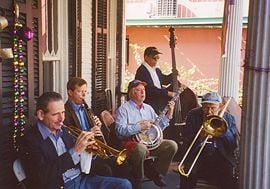
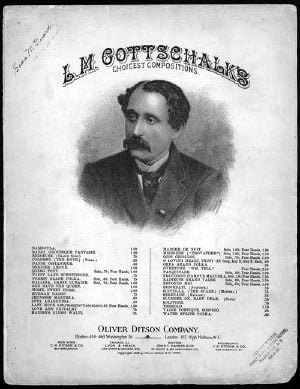
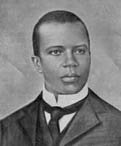
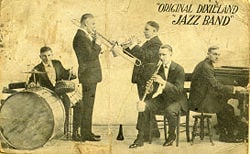
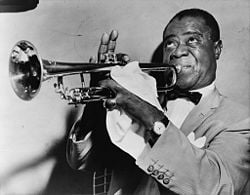
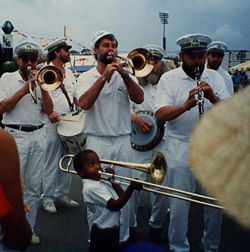
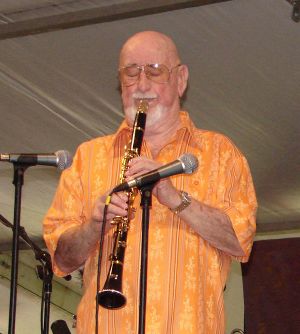
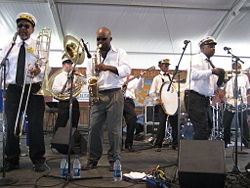
 KSF
KSF